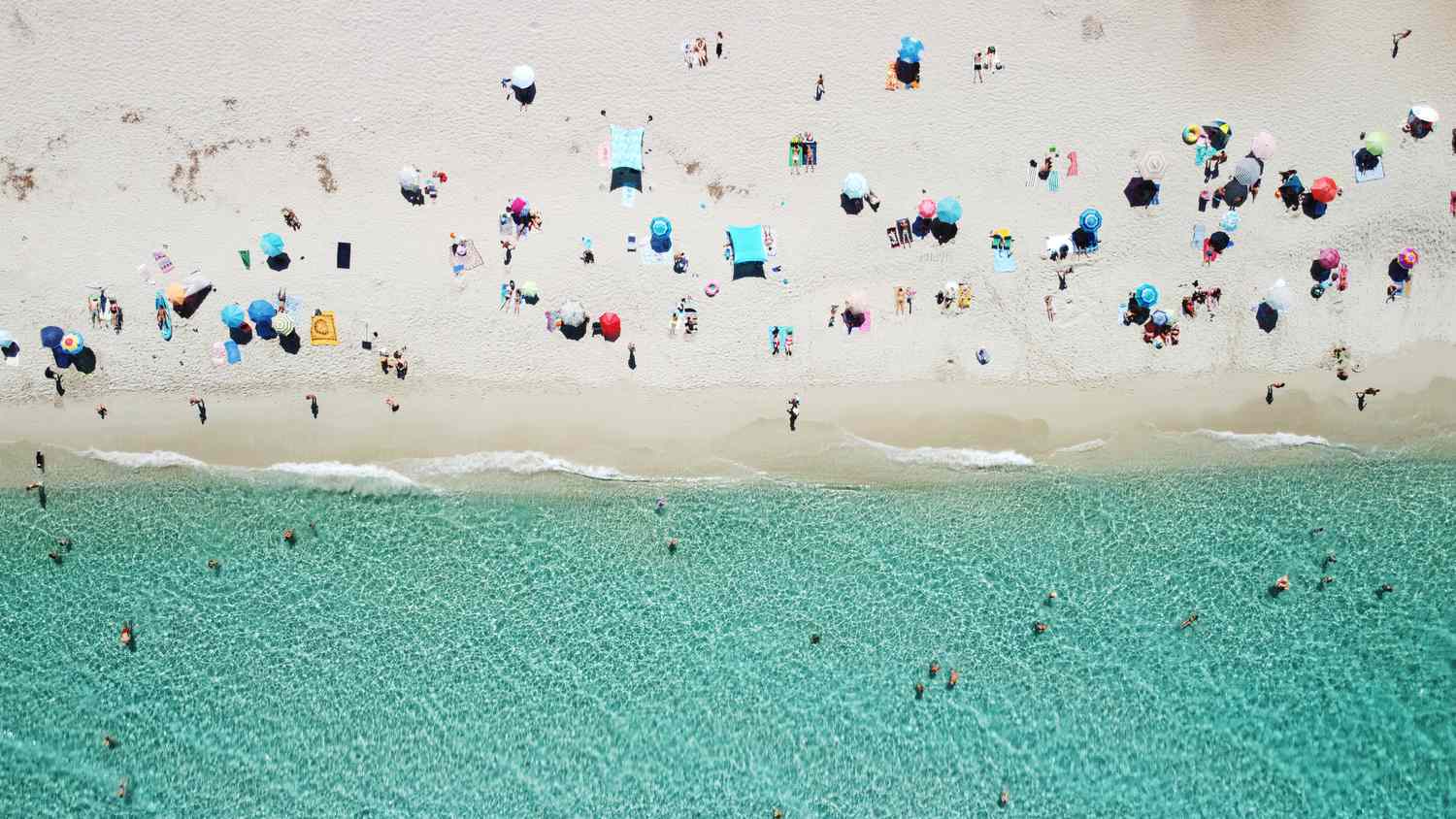Majority of US Beaches Had Unsafe Fecal Contamination Levels in 2019, Report Finds

More than half of the nation's beaches had potentially unsafe fecal contamination levels for at least one day last year, a new report shows.
The report, published on July 5 by the Environment America Research and Policy Center, an environmental non-profit, included data from coastal beaches and the Great Lakes region.
Results varied based on region—84% of beaches on the Gulf Coast were potentially unsafe for at least one day last year, and the same was true for 70% of beaches on the West Coast. Beach contamination was closer to the national average of 55% for Great Lakes and East Coast beaches, and was much less prevalent in Alaska and Hawaii.
There were also 363 beaches that were unsafe for at least a quarter of the days that they were tested, meaning the contamination was more frequent.
It’s possible that beaches were also contaminated on days where there was no water testing.
“We resolved as a nation that all of our waterways would be safe for swimming,” John Rumpler, JD, report co-author and clean water director at the Environment America Research and Policy Center, told Health. “Unfortunately, 50 years later, we find that all too often, there are pathogens [in] the places where we love to go swimming or surfing or sailing or rowing.”
Here’s what experts had to say about beach contamination in the U.S., why it may be on the rise, and what people can do to make their summer beach trips as safe as possible.
Rumpler and his co-author compiled data from water safety testing at 3,192 beaches across the nation last year. They found that 1,761—just over half—had potentially unsafe levels of fecal contamination for at least one day in 2022.
The Environment America Research and Policy Center found that similar beach contamination frequency in 2021, 2020, and 2019.
The Environmental Protection Agency (EPA) recently released its own 2022 beach report, which included data from 5,092 beaches that “[have], at minimum, a program to notify the public if swimming in the coastal water is unsafe due to bacterial contamination,” an EPA spokesperson told Health.
According to the EPA’s report, 70% of those beaches were monitored for bacteria, and only 29% of those had a safety advisory or closure. The majority of these warnings lasted between three and seven days.
In general, water testing is done by measuring concentrations of certain bacteria that could be a marker of fecal contamination. But actually determining whether a beach is safe or unsafe for swimming can be a bit more complicated.
In the Environment America Research and Policy Center report, the study authors used a certain EPA threshold, deeming beaches contaminated if 32 out of 1,000 swimmers might get sick from the pathogens. But that’s not a universal standard.
“There are states and local governments that use a less protective threshold in determining when to close a beach or even to just tell the public that there is a risk,” said Rumpler.
In Chicago, for example, a beach is considered contaminated if 36 out of 1,000 swimmers could potentially get sick, explained Abhilasha Shrestha, PhD, research assistant professor at the University of Illinois Chicago School of Public Health and report reviewer.
Both of these thresholds are given by the EPA, so the definition of contamination can change depending on who’s doing water testing, she told Health.
Hypothetically, some of the beaches deemed polluted in the report may have still been open to the public if the locale had looser contamination rules.
Water can get polluted in a number of ways—everything from trash to algae—but this newly published report focused specifically on water that’s been contaminated with feces. There are a number of ways that these pathogens can get into coastal waters.
According to the EPA, up to 45% of beach contaminations don’t have a clear cause. But about 21% are connected to stormwater runoff.
When there’s heavy rain, the water travels along hard surfaces such as roads or parking lots, picking up bacteria, oil, chemicals, or other pollutants, Rumpler explained. These can eventually run into coastal beaches.
Some cities also have joint sewer and stormwater systems that can overflow—this leads to “a mixture of raw, untreated sewage and stormwater” that can sometimes flow onto recreational beaches, said Rumpler.
Runoff water from large farms can sometimes also contaminate beaches, he added, as can feces from wildlife.
And experts are concerned that the U.S. may be seeing more of this contamination in the years to come.
“Intense storms over a very short period of time can overwhelm the capacity of sewer systems and the ability of our landscape to absorb stormwater,” Rumpler said. “So climate change, we believe, is likely to make this problem worse unless we do more to prevent it.”
The country is also losing natural wetlands and other areas that would otherwise help curb fecal contamination, Rumpler said. When those green spaces are paved over, there’s a higher chance that stormwater will run into beaches, instead of being absorbed into the ground.
Aging infrastructure is a concern as well, Rumpler and Shrestha agreed. Old or malfunctioning sewer and stormwater systems raise the chance that water will run into oceans or lakes instead of their intended destination.
It’s important to heed beach advisories or closures since swimming in contaminated water can be dangerous to people’s health.
“The most common recreational water illness can be [gastrointestinal] illness,” Shrestha said. People will typically experience nausea, diarrhea, and abdominal pain, she explained.
Contaminated water can also cause rashes or infections if it were to get into someone’s eye or nose, for example. Some people could also get respiratory illnesses, Shrestha said, but that’s much more unlikely.
These symptoms are unpleasant for anybody, but can be especially dangerous for elderly people, the immunocompromised, children, and pregnant people, Shrestha explained. Risk may also go up if a person comes into contact with a large amount of contaminants.
“If you’re swimming versus if you’re wading or paddling—your risk also depends on how much water you’re ingesting or if you’re submerging yourself,” she said. “So there are different levels of risk depending on what kind of recreation you’re doing.”
The degree to which the water is contaminated is also a factor—swimming in extremely polluted water is how people can catch illnesses such as typhoid, dysentery, or hepatitis, she added.
To avoid any possible illness from fecal pathogens, people should of course make sure that any beach they’re going to this summer is open and safe.
States typically post a list of any potentially unsafe beaches online, and the EPA recommends that people check for any advisories or issues before heading out on any beach excursions. The EPA and the Centers for Disease Control and Prevention have links for states’ beach monitoring sites.
And if someone lives in an area that’s had recent heavy rains, they may want to postpone any beach plans to reduce the risk of coming into contact with polluted stormwater, Rumpler said.
People should also do what they can to make sure their favorite beaches don’t become polluted in the first place, Shrestha added. Picking up any pet waste and carrying out trash can help reduce the risk of fecal contamination or pollution, she said.
But lowering pollution risks on a larger scale may require more significant changes.
“We need to invest in repairing our water and wastewater infrastructure, particularly with what we call green infrastructure,” Rumpler said. That means protecting existing landscapes and creating new ones to buffer and absorb stormwater before it has the chance to pollute beaches, he explained.
To address the other drivers of this contamination, the U.S. should focus on updating sewage infrastructure, Shrestha said. A 2016 EPA survey found that fully modernizing the U.S.’s wastewater systems would take $271 billion. It’s currently “distributing more than $11 billion in clean water funding under the Bipartisan Infrastructure Law,” an EPA spokesperson said.
“Every summer, millions of Americans want to be able to go to the beach with their families and splash in the waves and have fun in the water,” Rumpler said. “And we want to make sure that all of our beaches are safe for swimming all the time.”




